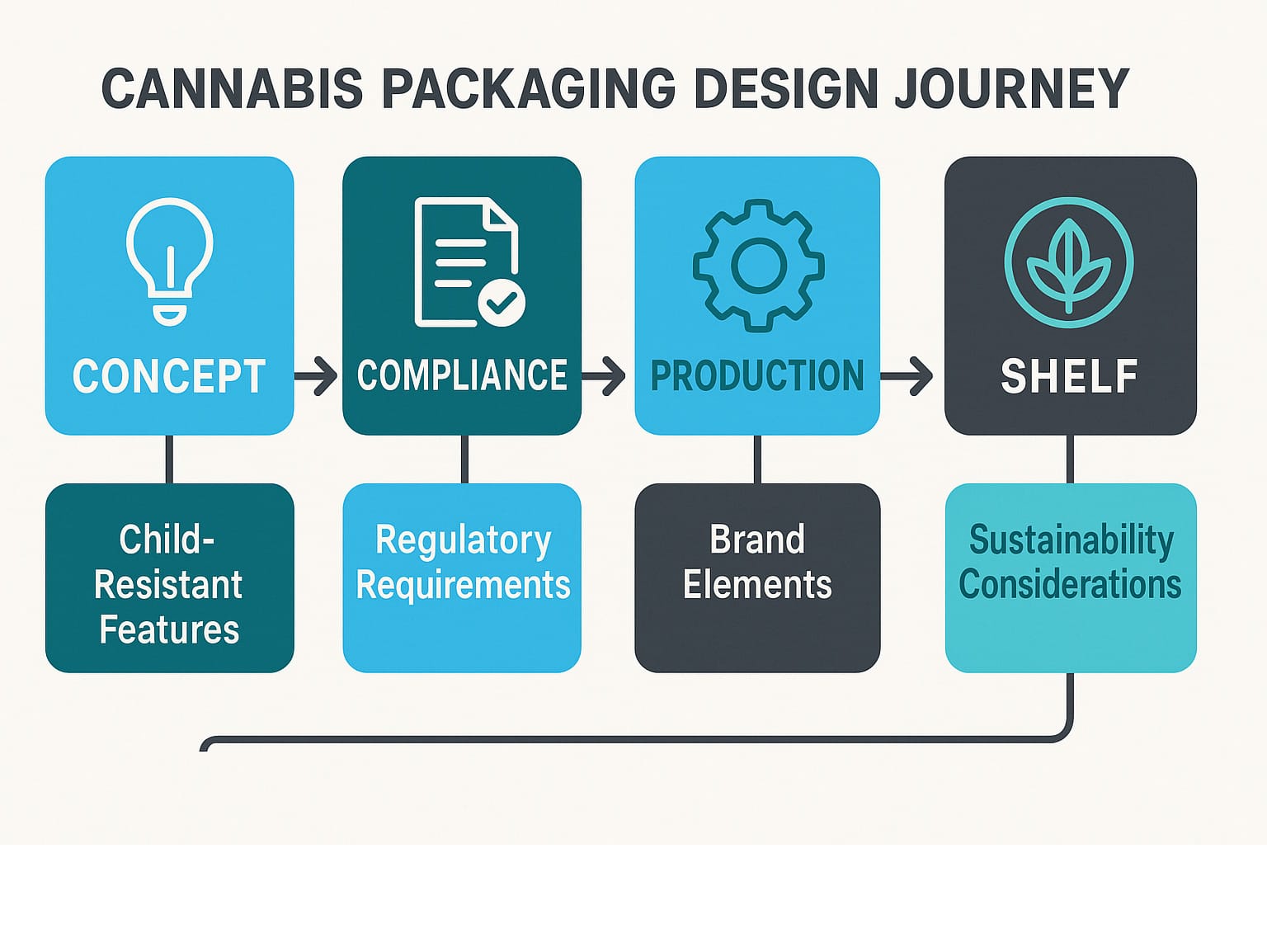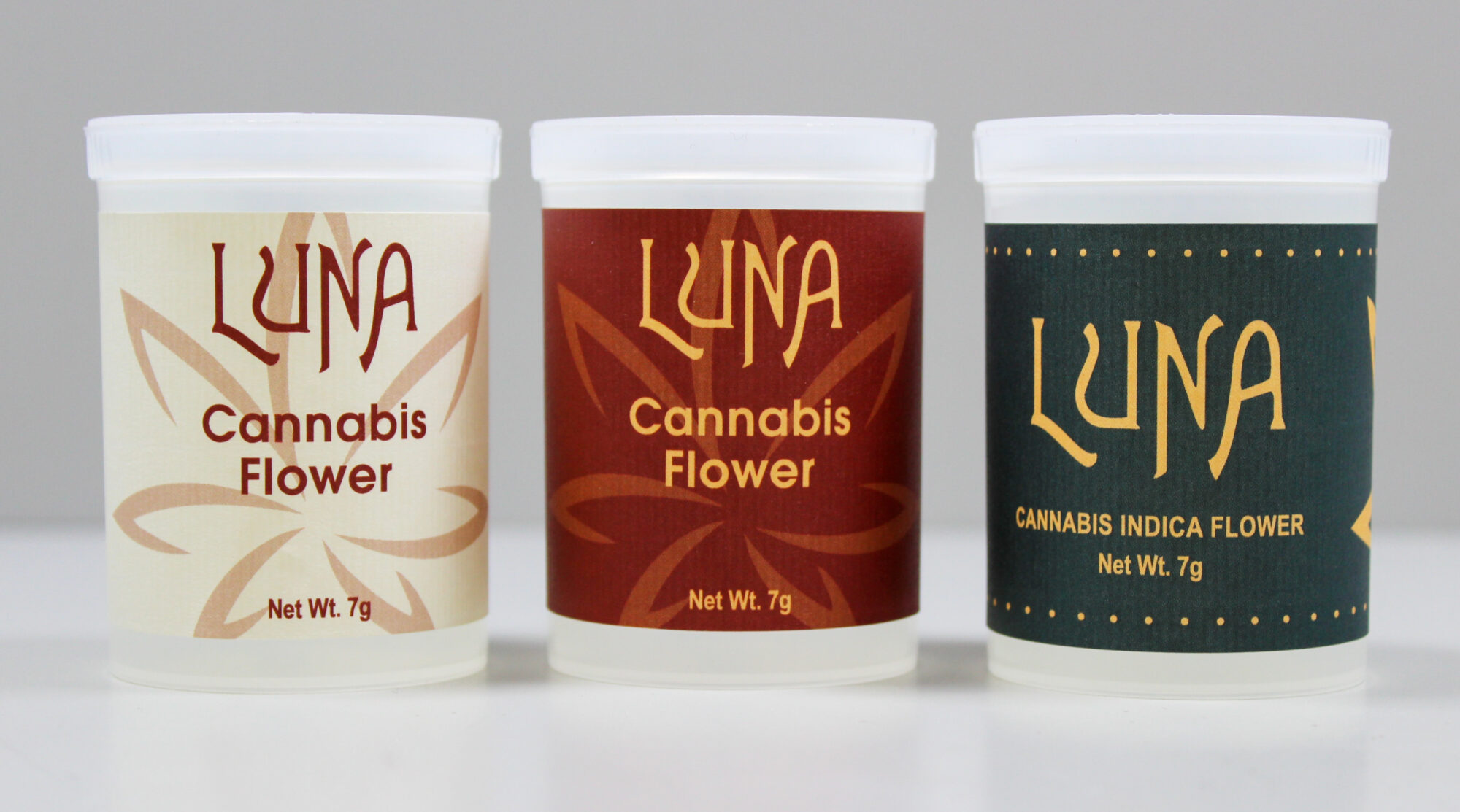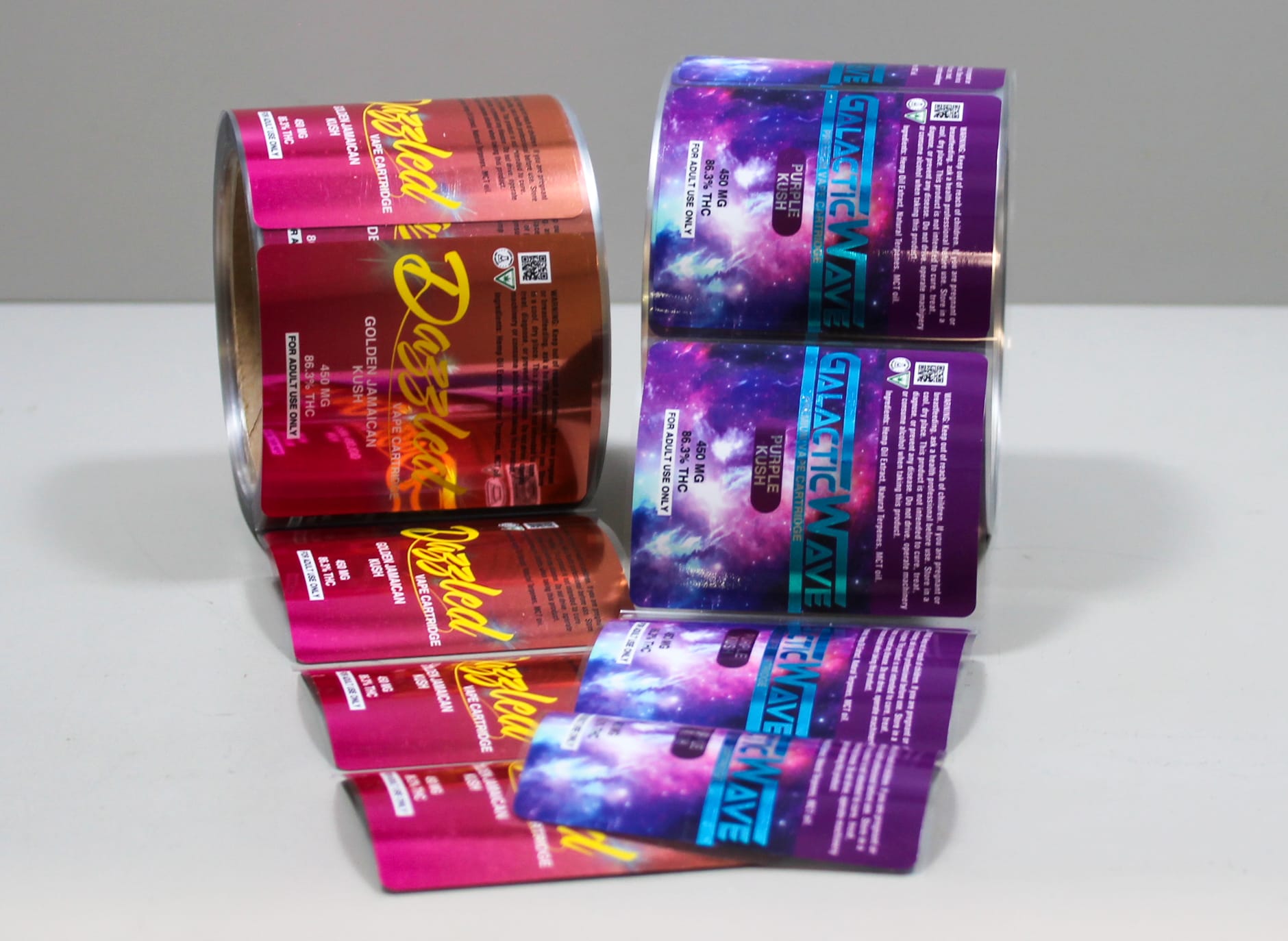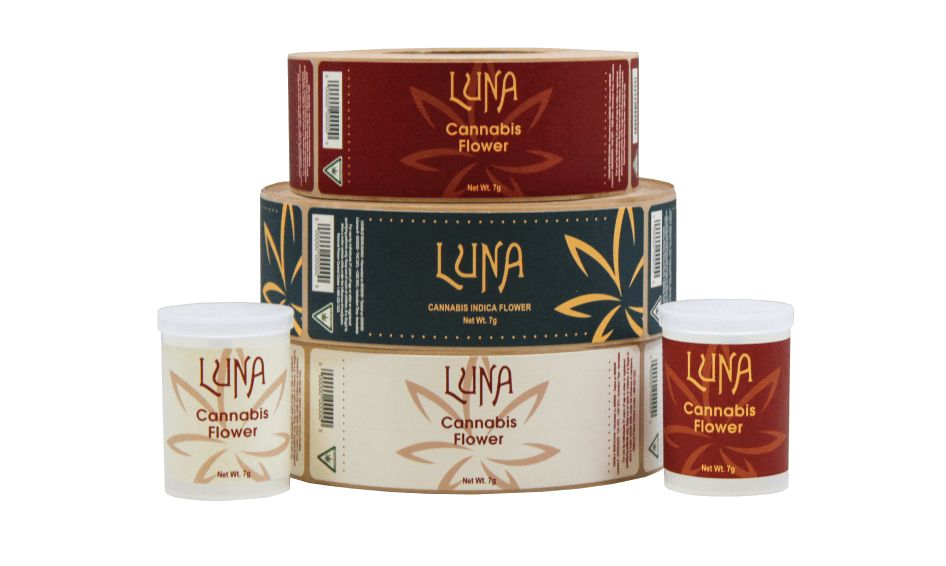Creating Impact Through Cannabis Packaging Design
Cannabis packaging design is the art and science of creating distinctive, compliant packaging that protects products while communicating brand identity and meeting regulatory requirements. As the cannabis industry matures, exceptional packaging has become a crucial differentiator in this increasingly competitive market.
Key Elements of Effective Cannabis Packaging Design:
- Child-resistant features – Required by law
- Regulatory compliance – Including proper labeling, warnings, and dosage information
- Brand identity – Colors, typography, and imagery that reflect your brand values
- Product protection – Maintaining freshness and preventing damage
- Sustainability – Eco-friendly materials and production methods
The cannabis packaging landscape has evolved dramatically from simple plastic baggies to sophisticated branded experiences. Today’s cannabis brands use packaging as a powerful tool to stand out on shelves, communicate product effects, and build consumer loyalty.
For cannabis brands, packaging must strike a delicate balance between being eye-catching enough to grab attention, compliant enough to pass regulatory scrutiny, and functional enough to preserve product integrity. Whether you’re packaging flowers, edibles, concentrates, or vapes, thoughtful design can significantly impact your market success.

The Foundations of Cannabis Packaging Design
The cannabis industry has come a long way since its early days, now arriving in sophisticated packaging that rivals and often exceeds premium consumer products in creativity and technical execution.
Why Great Cannabis Packaging Design Shapes Brand Identity
Your cannabis packaging design isn’t just a container; it’s your silent salesperson. In today’s crowded dispensaries, where dozens of similar products compete for attention, your packaging often provides that crucial first impression that can make or break a purchase decision.
Well-crafted packaging communicates volumes about who you are. It reveals your brand values, suggests the experience consumers can expect, signals your quality tier, and demonstrates your commitment to compliance. It’s a conversation with your customer before they’ve even opened the product.
The psychology of color plays a fascinating role in cannabis packaging design. Earthy greens and browns evoke natural, organic qualities that resonate with wellness-focused consumers. Clinical blues and whites project precision and medical reliability. Bold, vibrant colors might signal recreational enjoyment or specific effects. Your color palette isn’t just decoration—it’s communication.
Typography choices further reinforce your brand personality. Clean, minimalist fonts might appeal to sophisticated cannabis connoisseurs, while playful, bold typefaces could attract recreational explorers. The iconography you select helps consumers quickly identify product categories and effects, creating visual shorthand in a market where quick recognition matters.
Core Packaging Formats & When to Use Them
Cannabis products come in diverse forms, each with unique packaging needs:
- For flower, glass jars offer premium presentation and excellent freshness protection, while mylar bags provide cost-effective, flexible, and airtight solutions. Pop-top containers strike a balance with convenient dispensing and child-resistant features.
- Pre-rolls benefit from tubes for individual protection and portability, multi-pack boxes for gift-ready premium presentation, or discrete “doob tubes” for smell-proof convenience.
- Concentrates require special consideration—glass jars prevent terpene degradation, silicone containers offer non-stick reusability, and folding cartons add a premium feel to inner containers.
- Edibles packaging must balance safety and appeal: blister packs provide individual dosing with tamper-evidence, tins create a reusable premium feel, and flexible pouches offer cost-effective, resealable solutions.
- Vapes shine in custom boxes that showcase branding and deter theft, blister cards that display the product while remaining tamper-evident, or tubes that combine protection with premium presentation.
Each format offers different advantages for discretion, durability, and freshness. A premium flower brand might invest in custom glass jars with embossed lids to signal quality, while a value-focused brand might leverage custom-printed mylar bags that maximize economy of scale without sacrificing visual impact.

Materials 101: Pros & Cons
Your material selection speaks volumes about your brand while determining functionality:
- Mylar and flexible films offer cost-effectiveness, lightweight properties, and endless customization options with excellent barrier protection. However, they may feel less premium and raise sustainability concerns for environmentally conscious consumers.
- Glass conveys premium quality, can be reused, and excels at product preservation. The tradeoff comes with increased weight, fragility, and higher shipping costs.
- Paperboard and cardboard project a sustainable image with excellent printability and structural versatility. Their limitations include reduced moisture resistance and the requirement for inner packaging.
- Biodegradable options allow for eco-friendly messaging and reduced environmental impact, though they typically come with higher costs and potential shelf-life considerations.
For a deeper dive into available options that can lift your brand, explore more about weed packaging options that balance protection, compliance, and visual impact.
Navigating Trends, Compliance & Sustainability
The world of cannabis packaging design is a fascinating balancing act. You’re trying to create something that catches the eye while jumping through regulatory hoops. But here’s the good news: these challenges have sparked some of the most innovative packaging solutions we’ve seen in decades.
Cannabis Packaging Design that Meets Compliance Without Compromise
Every state has its own regulatory maze to steer, but most share standard requirements that your packaging must address.
Current Aesthetic Trends That Sell
Cannabis packaging design trends are constantly evolving, but several key directions are showing strong staying power:
- Minimalism has become a powerful force in cannabis packaging. Clean, simple designs with generous white space signal premium quality and medical precision.
- The pharmaceutical inspiration trend continues to gain momentum, with medical-style packaging featuring clinical aesthetics, pipet bottles, precision dosing information, and science-backed messaging. This approach resonates strongly with consumers who see cannabis primarily as a wellness tool.
- At the other end of the spectrum, the luxury approach is elevating cannabis products through high-end finishes like soft-touch coatings, foil stamping, embossing, and textured papers.
- Finally, tactile finishes are creating memorable unboxing experiences through soft-touch laminates, textured papers, and other haptic elements.

For more insights on how accessibility impacts cannabis packaging design, check out The Dieline’s research on cannabis packaging accessibility challenges.
Design Process & Best Practices
Creating effective cannabis packaging design is like crafting a story that balances artistic vision with practical realities. It’s not just about making something pretty – it’s about creating packaging that works on multiple levels while meeting stringent requirements.
Labeling Excellence: From Ink to Application
Labels are often where the rubber meets the road in cannabis packaging – they carry crucial information while contributing significantly to your brand presentation.
Pressure-sensitive labels offer versatility and can be produced in countless materials and adhesives to suit different container types. Shrink sleeves wrap your entire product in branding while providing tamper evidence. Direct printing eliminates separate labels for a seamless appearance, while variable data printing allows batch-specific information to be added efficiently during production.
At Whitlam Group, we’ve spent over 60 years perfecting the art and science of labels. We understand the unique challenges of cannabis packaging and bring expertise in both design and production to ensure your labels are compliant, durable, and visually striking.
Common Pitfalls & How to Avoid Them
Even seasoned cannabis brands can stumble into these common packaging traps:
- Overlooking compliance details: Cannabis regulations are complex and constantly evolving. Missing even small details can lead to rejected products and expensive redesigns. The solution? Work with compliance experts familiar with your target markets and create a detailed compliance checklist for each state.
- Prioritizing aesthetics over functionality: Beautiful packaging that doesn’t protect your product or meet user needs ultimately disappoints customers. Always test your packaging with actual users before finalizing designs, and consider the entire journey from purchase to disposal.
- Overdesigning: A temptation many brands can’t resist. Cluttered designs with too many elements confuse consumers and dilute your brand impact.
- Ignoring sustainability: Research sustainable materials that meet your functional requirements and be transparent about your environmental impacts and goals.
- Poor material selection: Always test materials with your actual product under real-world conditions before committing to large production runs.
- Neglecting scalability: Packaging that works beautifully for small batches may become problematic at scale. Consider how designs will translate to larger production runs and automated processes early in your development process.
By avoiding these common pitfalls and following a structured design process, you’ll create cannabis packaging that delights customers, meets regulatory requirements, and strengthens your brand with every purchase.
Cannabis Packaging Design Experts
Ready to lift your cannabis packaging? Contact Whitlam Group today to discuss how our expertise can help your brand make a lasting impression in this dynamic market. With our manufacturing capabilities and industry knowledge, we’re the partner you need to steer the journey from concept to shelf-ready packaging that truly represents your brand’s unique story.
